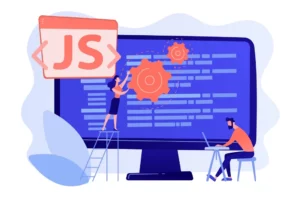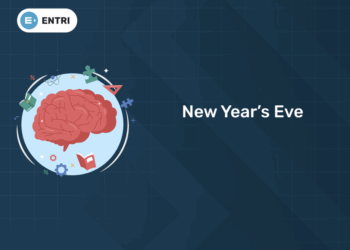Table of Contents
Introduction
Choosing the right programming language for web development is a critical decision that impacts everything from application performance and scalability to developer productivity and project timelines. Among the vast array of languages available, Java and Python consistently stand out as two of the most popular and powerful options. Each language has unique strengths, ecosystems, and ideal use cases, making the choice less about which one is “better” universally and more about which suits your specific project and team requirements.
In 2025, the landscape of web development continues to evolve rapidly, with new frameworks, tools, and industry demands shaping developer preferences. This guide provides a comprehensive comparison of Java vs Python for web development, highlighting key differences, strengths, frameworks, and practical advice to help developers, startups, and enterprises make informed decisions for building modern web applications.
Understanding Java and Python
1: Which of the following data types is immutable in Python?
Java: The Enterprise Powerhouse
Java is a statically typed, compiled programming language known for its robustness, scalability, and performance. Built on the principle of “write once, run anywhere,” Java code compiles into platform-independent bytecode executed by the Java Virtual Machine (JVM). This characteristic makes Java especially suitable for enterprise-grade applications, banking systems, and other mission-critical environments that demand high concurrency, security, and long-term maintainability. The language’s strict syntax enforces disciplined coding practices, which contributes to software stability and reduces runtime errors.
Java’s ecosystem is rich with mature frameworks such as Spring Boot and Jakarta EE, designed to build complex backend systems, microservices, and APIs efficiently. Its widespread usage in large corporations, telecom, financial institutions, and government organizations underscores its reputation as a tried-and-tested language for enterprise solutions.
Python: The Developer-Friendly Innovator
Python, designed for simplicity and readability, is a dynamically typed, interpreted language favored for its ease of use and versatility. Its clean syntax allows developers to write fewer lines of code to achieve results quickly, making it ideal for rapid prototyping and iterative development. Python’s diverse ecosystem includes powerful libraries for artificial intelligence, machine learning, data analysis, and web development.
Python dominates in web development through frameworks like Django, which offers a “batteries-included” approach with ORM, templating engines, and security features built-in. Lightweight frameworks such as Flask and FastAPI enable developers to craft APIs and microservices flexibly. Python views web development as part of a fast-evolving tech stack, making it popular among startups, research labs, and companies integrating AI into their web solutions.
🚀 Start Coding Today! Enroll Now with Easy EMI Options. 💳✨
Gain expertise in Django and open doors to lucrative opportunities in web development.
Start Learning With EMI Payment OptionsHead-to-Head Comparison: Java vs Python for Web Development
| Criteria | Java | Python |
|---|---|---|
| Language Type | Statically typed, compiled | Dynamically typed, interpreted |
| Performance & Speed | Faster runtime due to ahead-of-time compilation & JIT | Slower execution, runtime interpreted code |
| Syntax & Readability | Verbose, strict, error-proof | Clean, concise, easy to learn and read |
| Development Speed | Slower development, steeper learning curve | Rapid development, ideal for prototyping |
| Popular Frameworks | Spring Boot, Jakarta EE | Django, Flask, FastAPI |
| Scalability | Excellent for large, complex systems | Scalable but less efficient for high-concurrency compute-heavy apps |
| Community & Ecosystem | Mature, enterprise-focused | Fast-growing, strong in AI/ML and startups |
| Security | Strong security features built-in | Requires secure coding practices and frameworks |
| Best Use Cases | Enterprise apps, banking, telecom | Startups, AI-powered apps, content management |
| Learning Curve | Steeper for beginners | Beginner-friendly |
Performance
Java outperforms Python in raw speed and efficiency due to its ahead-of-time compilation and Just-In-Time (JIT) optimization provided by the JVM. This makes it especially suitable for applications requiring high throughput and low latency. Python’s interpreted nature, while enabling flexibility and rapid testing, often results in slower execution. Nevertheless, Python’s performance is sufficient for most web applications and compensated by faster development cycles.
Syntax and Developer Experience
Python’s syntax emphasizes readability, reducing boilerplate code and making it accessible to newcomers and teams focused on productivity. Java’s verbose and strongly typed syntax demands more code and upfront design but aids in early error detection and maintainable software at scale.
Frameworks for Web Development
-
Java: Spring Boot is the most popular Java framework for backend development, offering tools to build scalable microservices, REST APIs, and secure enterprise applications. Jakarta EE continues to be favored for legacy and large-scale systems.
-
Python: Django provides a comprehensive package with an ORM, authentication, and an admin panel, enabling rapid development. Flask and FastAPI cater to lightweight and asynchronous app needs, favored for modern API-first architectures.
When to Choose Java for Web Development
Java is optimal for projects where performance, scalability, and stability are top priorities. Consider Java if:
-
Building large-scale, complex enterprise web applications that require robustness and a proven technology stack.
-
Developing applications in industries with stringent security and compliance requirements such as banking, finance, telecommunications, healthcare, and government.
-
Needing high concurrency and multithreading support for real-time transaction processing or large user bases.
-
Targeting environments that rely heavily on legacy Java systems or integration with existing Java-based infrastructure.
-
Requiring a strongly typed language that enforces compile-time error checking, leading to fewer runtime issues and improved long-term maintainability.
-
Prioritizing fast execution and memory management through Just-In-Time (JIT) compilation and ahead-of-time bytecode optimization.
-
Utilizing mature enterprise frameworks such as Spring Boot for microservices, Jakarta EE for traditional business applications, and extensive middleware solutions.
-
Developing Android backend services or mobile apps that integrate seamlessly with Java.
-
Scaling applications with large teams where strict code contracts improve coordination and minimize bugs.
-
Planning for mission-critical applications where uptime and fault tolerance are essential.
When to Choose Python for Web Development
Python excels in scenarios prioritizing developer productivity, flexibility, and integration with AI and data technologies. Opt for Python if:
-
Rapid prototyping or building Minimum Viable Products (MVPs) with quick iteration cycles is crucial.
-
Developing data-driven web applications that integrate machine learning, artificial intelligence, or analytics features easily.
-
Working in startup or research environments where agility and fast time-to-market outweigh raw performance.
-
Preferring a language with an easy learning curve and highly readable syntax for better team collaboration and onboarding.
-
Building content management systems, blogging platforms, or SaaS products where simplicity and developer productivity are priorities.
-
Needing rich libraries and frameworks like Django for a batteries-included approach or Flask and FastAPI for lightweight APIs and asynchronous web apps.
-
Targeting cross-platform compatibility with code simplicity for developers across different skill levels.
-
Focusing on automation or scripting combined with web functionalities in one ecosystem.
-
Valuing an expansive and fast-growing community with strong support in AI, data science, and web development.
-
Wanting flexibility in dynamic typing for experimental features and rapidly evolving product specifications.
🚀 Start Coding Today! Enroll Now with Easy EMI Options. 💳✨
Gain expertise in Django and open doors to lucrative opportunities in web development.
Start Learning With EMI Payment OptionsIndustry Trends and Job Market in 2025
In 2025, Python’s popularity continues to surge, holding a top position among programming languages globally. Its growth is fueled by its dominant role in AI, machine learning, data science, and automation, making it highly relevant across diverse domains beyond traditional web development. Python is the language of choice for innovation-driven companies and startups expanding their web capabilities with intelligent features.
Conversely, Java remains a cornerstone of enterprise IT with steady demand in sectors requiring high reliability, security, and scalability such as finance, telecommunications, and government services. Its ecosystem evolves with frameworks like Spring Boot embracing modern microservices architectures, ensuring Java’s relevance in contemporary web development.
Job market surveys reveal:
-
Python ranks among the top 3 most wanted languages by employers, especially in tech hubs and startups focused on AI and data-driven solutions.
-
Java holds strong positions in backend development jobs for enterprises, large system integrations, and Android-related backend services.
-
Full stack development with Python (Django or Flask combined with frontend JS frameworks) is trending for rapid MVP delivery.
-
Java full stack roles remain critical for organizations with complex infrastructures and legacy system modernization efforts.
In summary, the choice between Java and Python also reflects broader industry dynamics—Python epitomizes agile innovation, while Java anchors traditional robustness and scaling. Career-wise, learning both languages is an asset, but specialization depends on whether one aims at startup tech or large-scale enterprise software.
Conclusion
Java and Python each cater to distinct needs in web development. Java powers secure, scalable, and mission-critical enterprise applications, while Python enables rapid prototyping, AI integration, and developer-friendly web solutions. By understanding project goals, timelines, and team skills, developers and businesses can harness the unique strengths of these languages to build modern web applications that thrive in 2025 and beyond.
Related Articles
🚀 Start Coding Today! Enroll Now with Easy EMI Options. 💳✨
Gain expertise in Django and open doors to lucrative opportunities in web development.
Start Learning With EMI Payment OptionsFrequently Asked Questions
Which language is better for backend web development?
Both are strong backend languages. Java excels in large-scale, secure systems; Python offers faster development and easy integration with AI.
Is Python slower than Java?
Typically, yes. But most web applications do not require raw performance, making Python’s speed practical for many use cases.
Which language has better frameworks for web apps?
Python’s Django and FastAPI are excellent for rapid development, while Java’s Spring Boot is ideal for enterprise-grade applications.
Can I use Python for frontend web development?
Python is mainly backend-focused. Frontend development is dominated by JavaScript and its frameworks.
















